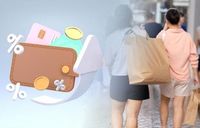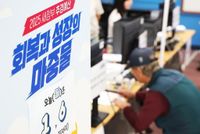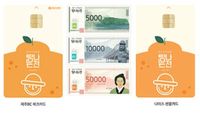On September 22, 2025, South Korea rolled out the second phase of its much-anticipated Livelihood Recovery Consumption Coupon program—a sweeping economic stimulus effort aimed squarely at revitalizing local economies and boosting consumer spending. This time, the focus is on the bottom 90% of income earners, with the country’s wealthiest 10% and high-asset households explicitly left out of the benefits. The move comes after the first phase, launched in July, was credited with driving up local business revenues and consumer sentiment to levels not seen in years, according to multiple reports from Seoul Ilbo and ETNews.
The eligibility criteria for this second round are clear and stringent. As reported by ETNews, only citizens registered in Wonju city as of June 18, 2025, are eligible—provided their household income falls within the lower 90% bracket. The government further tightened access by excluding households with property tax assessment standards exceeding 1.2 billion won or with annual financial income above 20 million won. There’s an added layer of fairness: for single-person and multi-income households, the income thresholds are adjusted, reflecting the unique financial realities they face. Vulnerable groups, such as basic livelihood security recipients, near-poor households, and single-parent families, are explicitly included to ensure the safety net reaches those who need it most.
How does one get a hold of this coveted coupon? Both online and offline application routes are open. Nine major card companies—including KB Kookmin, NH Nonghyup, Lotte, Samsung, Shinhan, Woori, Hana, Hyundai, and BC—are supporting applications via their websites, apps, call centers, and ARS systems, as confirmed by ETNews. For those less digitally inclined, local banks and administrative welfare centers are handling in-person applications. The process is organized to prevent system overload: for the first week, applicants must follow a day-of-the-week system based on the last digit of their birth year. Weekends are a free-for-all, but only online applications are accepted during those days. Adults must apply individually, while minors’ applications are handled by the head of their household.
The payout is straightforward: each eligible citizen receives a 100,000 won coupon, which must be spent by November 30, 2025. The choice of payment method is flexible—recipients can opt for credit or debit card points, prepaid cards, or mobile regional gift certificates. The coupons can be used at a wide array of small businesses and essential service providers, including restaurants, supermarkets, convenience stores, and pharmacies, as well as local marts and military service area shops. For this second phase, the government has expanded the list of eligible merchants to include community co-op stores with annual revenue exceeding 3 billion won, so long as their purpose is deemed public-interest oriented—a nod to the evolving needs of the population.
According to Seoul Ilbo, the first phase of the program, which began on July 21, 2025, was a resounding success. The government distributed between 150,000 and 450,000 won per person, with additional support for vulnerable groups. The result? A staggering 98.9% application rate and a total disbursement of approximately 9 trillion won. Consumer sentiment, as measured by the Consumer Sentiment Index, jumped from 110.8 in July to 111.4 in August, reaching its highest point in over seven years. The Business Satisfaction Index (BSI) for small merchants also rebounded, reflecting a broader recovery in domestic demand. Perhaps most telling, sales at small affiliated merchants surged by 15.4% month-over-month, offering concrete evidence that the coupons had a real, measurable impact.
This time around, the government is doubling down on accessibility and convenience. The advance notification service, known as the "National Secretary," provides timely updates about eligibility, application methods, and deadlines—making the process smoother for everyone involved. And for those worried about missing out, the government has set the final application deadline at October 31, 2025, at 6 PM. Any unused coupon balance after November 30 will simply expire, so there’s a real incentive to spend, and spend soon.
What about the economic impact? The numbers are already promising. According to data submitted to the National Assembly’s Planning and Finance Committee and reported by ETNews, the two weeks following the first phase saw total credit and debit card spending hit 40.87 trillion won. Of that, 9.59 trillion won was spent at businesses with annual sales under 3 billion won—a 26.8% increase compared to the two weeks before the program began. For small business owners, this surge in spending provided a much-needed lifeline during a period of economic uncertainty.
But the government isn’t just stopping at short-term boosts. As Seoul Ilbo points out, there’s growing recognition that while these consumption coupons are effective in the short run, they are not a panacea. The limited usage window means spending is concentrated in a short period, raising concerns about a possible "rebound effect"—a drop in spending once the program ends. Experts quoted by Seoul Ilbo argue that for South Korea to achieve sustained economic recovery, these short-term injections must be paired with longer-term strategies: continued support for small businesses, improvements to industrial structures, and investments in local economic infrastructure.
In the meantime, city officials are optimistic. A representative from Wonju City Hall told Seoul Ilbo, "We hope that the Livelihood Recovery Consumption Coupon will provide real help to local small business owners and revitalize the local economy." The sentiment is echoed by many, including those in the card industry, where companies like Shinhan Card have upgraded their systems to allow customers to manage both first and second phase coupon balances seamlessly.
The government’s approach also reflects lessons learned from the first phase. By fine-tuning eligibility criteria and expanding the range of usable merchants, policymakers are striving to maximize both fairness and economic impact. They’ve also made a concerted effort to improve the application process, making it more accessible through digital channels while retaining offline options for those who need them.
Ultimately, the second phase of the Livelihood Recovery Consumption Coupon program represents a careful balancing act—addressing immediate needs while laying the groundwork for longer-term change. Whether it will succeed in maintaining momentum and driving deeper economic recovery remains to be seen, but for now, it’s clear that the government is pulling out all the stops to keep wallets open and businesses afloat as the nation looks toward a brighter economic future.


